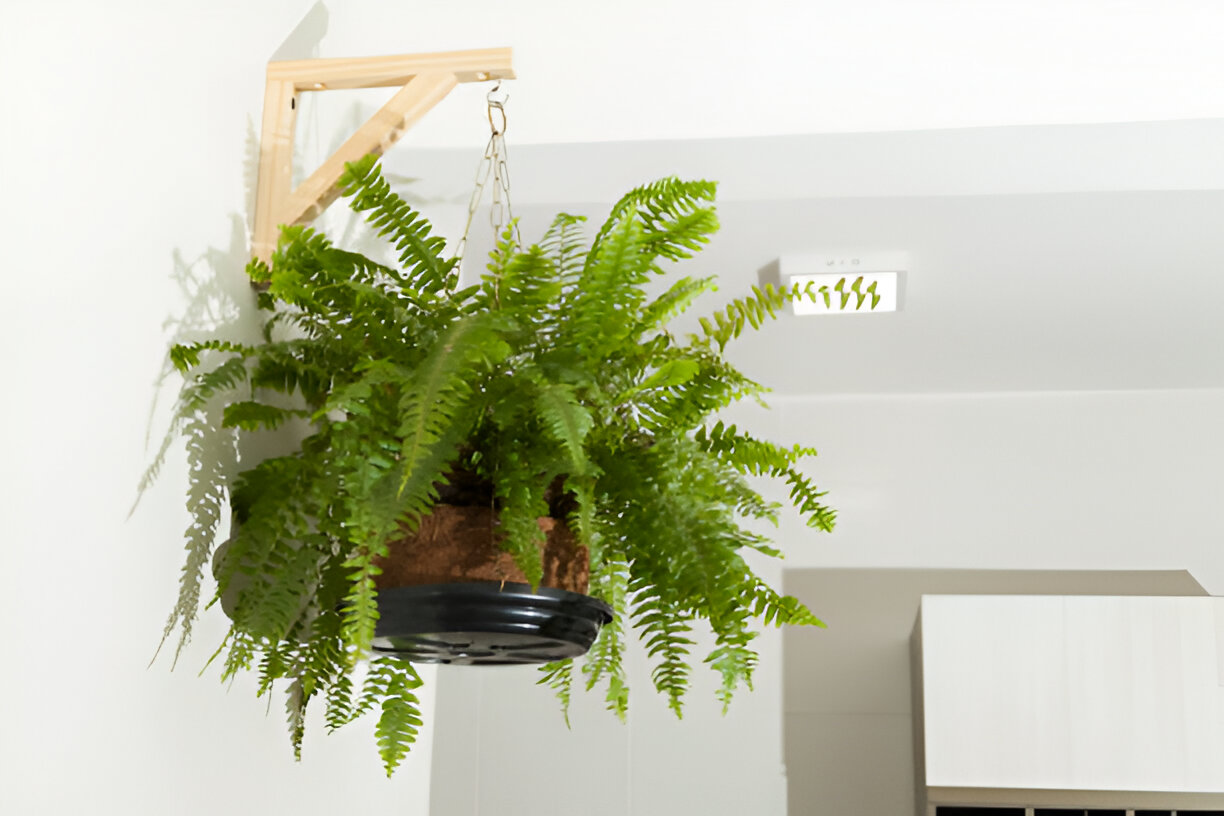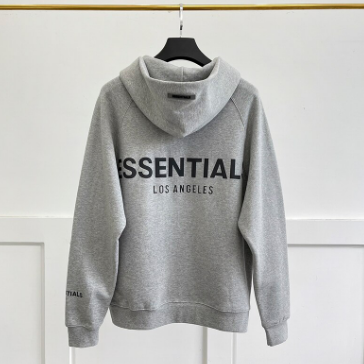You’re in your living room, looking around for ways to make the space feel more inviting. You’ve tried adding art, cushions, even a cozy rug, but something still feels missing. Then, an idea strikes—what if you brought in some greenery? Not just any plants, but beautiful hanging plants that add life from above.
Excited, you start imagining vines cascading down, creating a little green oasis right in your home. But then you remember hearing that hanging plants don’t do well indoors. Are they too delicate for indoor spaces? Will they fade without direct sunlight?
In this blog, we will look at the facts behind a common myth. You’ll find out that, with the right plants and a few simple care tips, indoor hanging plants can thrive beautifully, transforming any space into a fresh, vibrant sanctuary.
Hanging Plants Don’t Thrive Indoors – Is This a Myth?
Concerns about light, space, and humidity are common reasons for people to assume that hanging plants won’t thrive in the interior Many people believe that plants require broad spaces and sufficient sunlight for proper growth, which makes indoor environments less suitable. This belief may discourage people from bringing the beauty of hanging plants into their homes. However, is this really true?
Reality
In reality, many types of hanging plants do exceptionally well indoors when given the right conditions. Some hanging plants require moderate sunlight, thrive in indirect light, and adapt well to indoor air quality. Anyone can grow attractive indoor hanging plants by understanding a plant’s specific needs and choosing the right species. With proper care, hanging plants can be a vibrant addition to your living spaces.
6 Major Myths About Indoor Plants and Indoor Hanging Plants
Misconceptions about indoor hanging plants can prevent people from reaping the benefits of these gorgeous green companions. Let’s explore some of the major myths surrounding indoor plants and their realities.
Myth 1: Indoor Hanging Plants Need Constant Sunlight
Many people believe that indoor hanging plants require constant sunlight to survive. This myth usually blocks individuals from introducing vegetation to spaces with limited natural light. However, this misunderstanding overlooks how adaptable many hanging plants are, prompting some people to avoid indoor plants altogether.
- Reality: While some plants do require lots of sunlight, many hanging plants do well in low to medium light. Plants like pothos and spider plants can thrive with indirect sunlight, making them perfect for indoor hanging setups.
Myth 2: Indoor Plants Don’t Purify Air
Some people believe that indoor plants are only attractive and do not improve air quality. This myth dismisses how many indoor plants, such as peace lilies and spider plants, can help remove toxins and increase oxygen levels, which makes indoor spaces feel fresher.
- Reality: Studies have shown that indoor plants can reduce certain pollutants in the air, thus improving indoor air quality. Certain plants, such as the peace lily, are effective at filtering out pollutants, benefiting your health and the environment.
Myth 3: Hanging Plants Will Make Indoor Spaces Too Humid
Many people think hanging plants will cause indoor spaces to become overly humid, fearing plants will add too much moisture to the air.
- Reality: While plants do release moisture, the impact is minimal. In fact, indoor plants often maintain a balanced level of humidity, contributing to a more comfortable indoor environment without making it overly damp.
Myth 4: Indoor Hanging Plants Require Frequent Watering
A common myth is that indoor hanging plants need constant watering to stay healthy. Many assume these plants quickly dry out and need daily attention.
- Reality: Many hanging plants require minimal watering. Species like succulents and ZZ plants only need watering once every couple of weeks, making them low-maintenance options for indoor settings.
Myth 5: Indoor Plants Attract Bugs and Pests
Many people believe that indoor plants attract bugs and vermin. This misunderstanding causes many people not to buy indoor plants for fear of bugs.
- Reality: Most indoor plants, when properly cared for, do not attract pests. Overwatering and poor soil conditions are often the real culprits. Regular care and well-draining soil can prevent bug infestations effectively.
Myth 6: Hanging Plants Need Large Indoor Spaces
A misconception exists that hanging plants are only suitable for large, open areas.
- Reality: Indoor hanging plants can fit beautifully into smaller spaces. They add greenery without taking up floor space, making them perfect even for compact apartments.
“Indoor hanging plants are nature’s way of adding elegance to small spaces—bringing beauty, air, and life all in one graceful sweep.” “The Living Art” by L. Greenfield
What Are the Best Indoor Hanging Plants?
Choosing the right plants can make a big difference in how well they thrive indoors. Here are some of the best indoor hanging plants that adapt well to indoor environments.
- Spider Plant: Spider plants are resilient, easy to grow, and thrive in low light. They are also great air purifiers, removing pollutants from indoor air.
- Pothos: Known for its trailing vines, pothos is a low-maintenance plant that grows well in indirect light. It is perfect for hanging baskets and doesn’t require much water.
- English Ivy: This classic plant grows well in hanging pots, and its lush, trailing vines create a beautiful, cascading effect. English ivy also has air-purifying qualities.
- Boston Fern: Boston ferns are a great choice for adding texture to indoor spaces. They thrive in humid conditions and low light, making them ideal for bathrooms.
- Philodendron: With heart-shaped leaves, philodendrons are easy to care for and grow well in low light. They’re perfect for indoor spaces that don’t receive direct sunlight.
- String of Pearls: This unique succulent adds a quirky touch to any room. It requires minimal water and does well in bright, indirect sunlight.
“Hanging plants bring nature to our eye level, encouraging us to pause and breathe while grounding our spaces with vibrant life both above and below.” “Green Elevation” by S. Hartfield
Which Hanging Plant Pots Are Ideal for Growing Hanging Plants Well in Indoor Settings?
Selecting the right pots is essential for successful indoor hanging plants. Here are some of the best hanging plant pots to consider.
- Ceramic Hanging Pots: Ceramic pots retain moisture well, making them ideal for plants that prefer slightly damp conditions. They are also visually appealing and come in various colors.
- Self-Watering Pots: These pots make plant care easier by providing a reservoir for water, which the plant can absorb as needed. Self-watering pots are perfect for low-maintenance plants.
- Macrame Hangers: Macrame hangers are a trendy way to display hanging plants. They allow air circulation around the plant and add a boho-chic touch to any room.
- Plastic Pots with Drainage Holes: Plastic pots are lightweight and often come with built-in drainage, which is essential to prevent root rot in indoor plants.
- Glass Hanging Planters: Glass planters are ideal for showcasing plants with unique root structures or water-based plants. They create a clean, modern look and are perfect for minimalist decor.
Hanging Plants Comparison Chart
|
Plant Name |
Light Requirements |
Watering Needs |
Ideal Pot Type |
Growth Rate |
|
Pothos |
Low to moderate light |
Moderate watering |
Ceramic, plastic |
Fast |
|
Spider Plant |
Indirect light |
Low to moderate |
Self-watering, plastic |
Moderate |
|
English Ivy |
Indirect light |
Moderate |
Ceramic |
Fast |
|
Boston Fern |
Indirect light, high humidity |
Frequent watering |
Ceramic, macrame |
Moderate |
|
String of Pearls |
Bright, indirect light |
Low |
Glass terrarium |
Slow |
|
Air Plants |
Bright, indirect light |
Occasional misting |
Glass terrarium, macrame |
Slow |
Can Hanging Plants Really Grow Well Indoors?
Hanging plants can absolutely thrive indoors if given the proper conditions. A little effort in choosing the right plants and containers goes a long way in ensuring their health and longevity. Indoor hanging plants also offer aesthetic and environmental benefits, adding life and color to any room.
About Backyard Buys
At Backyard Buys, we know the joy that indoor plants provide to any room. Our extensive collection of the best indoor hanging plants and hanging plant pots helps you to transform your home into a green haven. Whether you’re an experienced plant lover or just starting out, we have everything you need to start or improve your indoor garden. We provide excellent options for indoor gardening, including low-maintenance plants like pothos and stunning Boston ferns. Visit us to get the best indoor hanging plants and hanging plant pots in the UAE, and we’ll help you add a touch of nature to your house.
Let’s Recap
Hanging plants offer a wonderful way to bring the outdoors in, adding vibrancy and freshness to any indoor setting. While some myths suggest that hanging plants struggle indoors, the reality is that many plants can thrive with the right care and conditions. With the best indoor hanging plants and the right hanging plant pots, anyone can create a flourishing green sanctuary within their home.
Bringing hanging plants into your living space is more than just decorating; it’s about nurturing life and benefiting from nature’s soothing qualities. Whether you’re a seasoned gardener or a beginner, there’s a hanging plant that will suit your indoor space perfectly.
Make your indoor space bloom with the beauty of hanging plants—no myth, just a touch of green magic!
Stay connected for the freshest updates on TourismVlogs!




